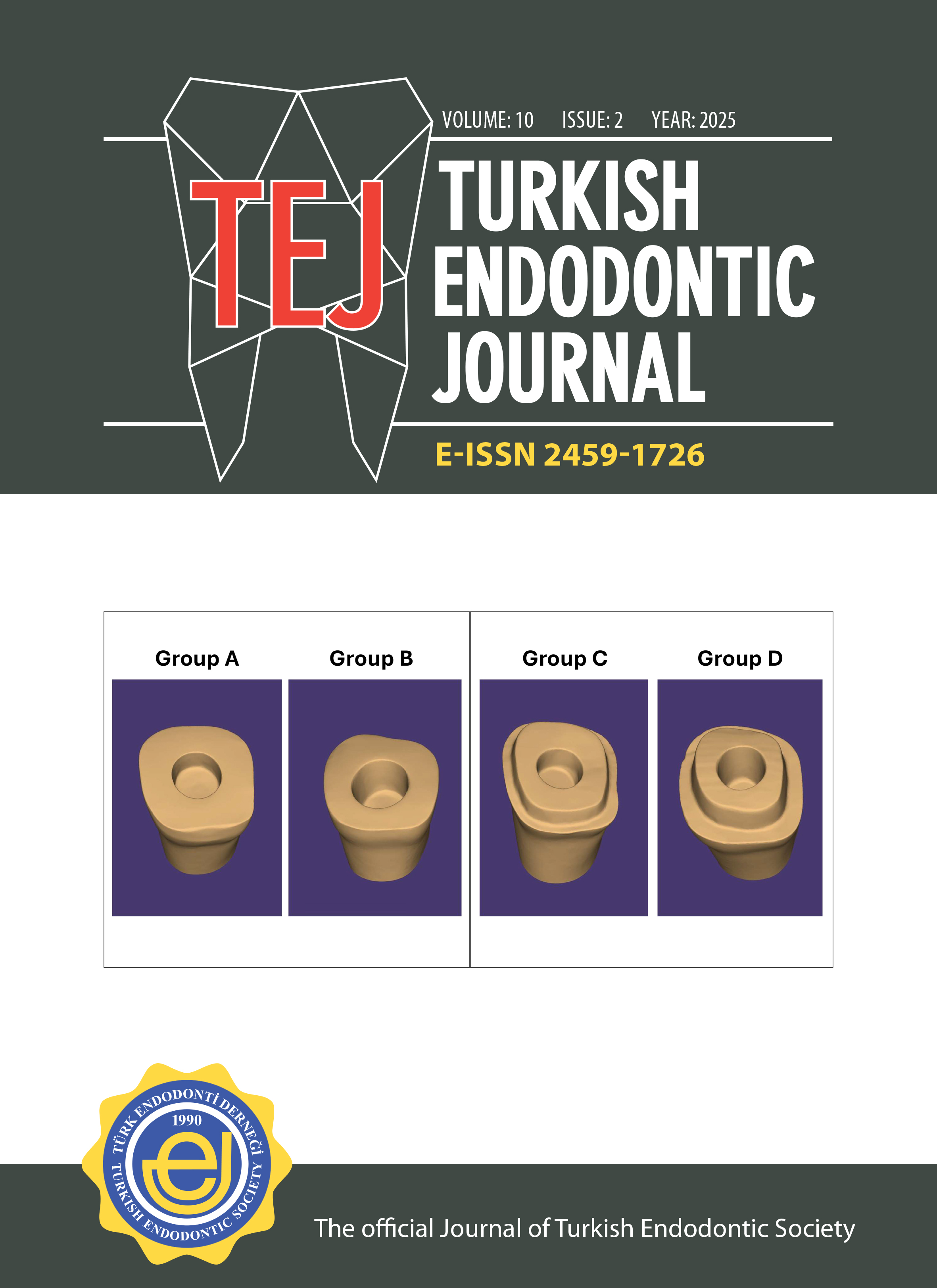Determination of materials, techniques, and application methods preferred by Turkish dentists in endodontic treatment
Ezgi Can Çekiç1, Bekir Oğuz Aktener2, Oğuz Tavşan11Department of Endodontics, Usak University Faculty of Dentistry, Usak, Türkiye2Department of Endodontics, Ege University Faculty of Dentistry, Izmir, Türkiye (Retired)
Purpose: This study aimed to examine the materials, methods, and application techniques used by general dentists in root canal treatment through a survey and to compare the findings with previous studies conducted in Turkey and globally.
Methods: A survey consisting of 21 questions was administered to 691 general dentists working in private clinics and public institutions in İzmir. Participation was voluntary, and data were analyzed using the Chi-Square test with IBM SPSS Statistics 23 software.
Results: Among the participants, 22.7% did not perform root canal treatment. The electric pulp test was the most preferred vitality test (47%), while electronic apex locators were widely used for determining the working length. Sodium hypochlorite (91.6%) was the most common irrigation solution, and calcium hydroxide (91.4%) was the preferred intracanal medication. Nickel-titanium rotary files were used by 85.6% of dentists, and 72.1% employed the single-cone technique for root canal filling. Notably, only 1.5% used a rubber dam.
Conclusion: Older dentists tended to favor conventional methods, while no standardization was observed in material and method selection across demographic groups. The use of rubber dams was significantly lower than international standards.
Manuscript Language: English



















